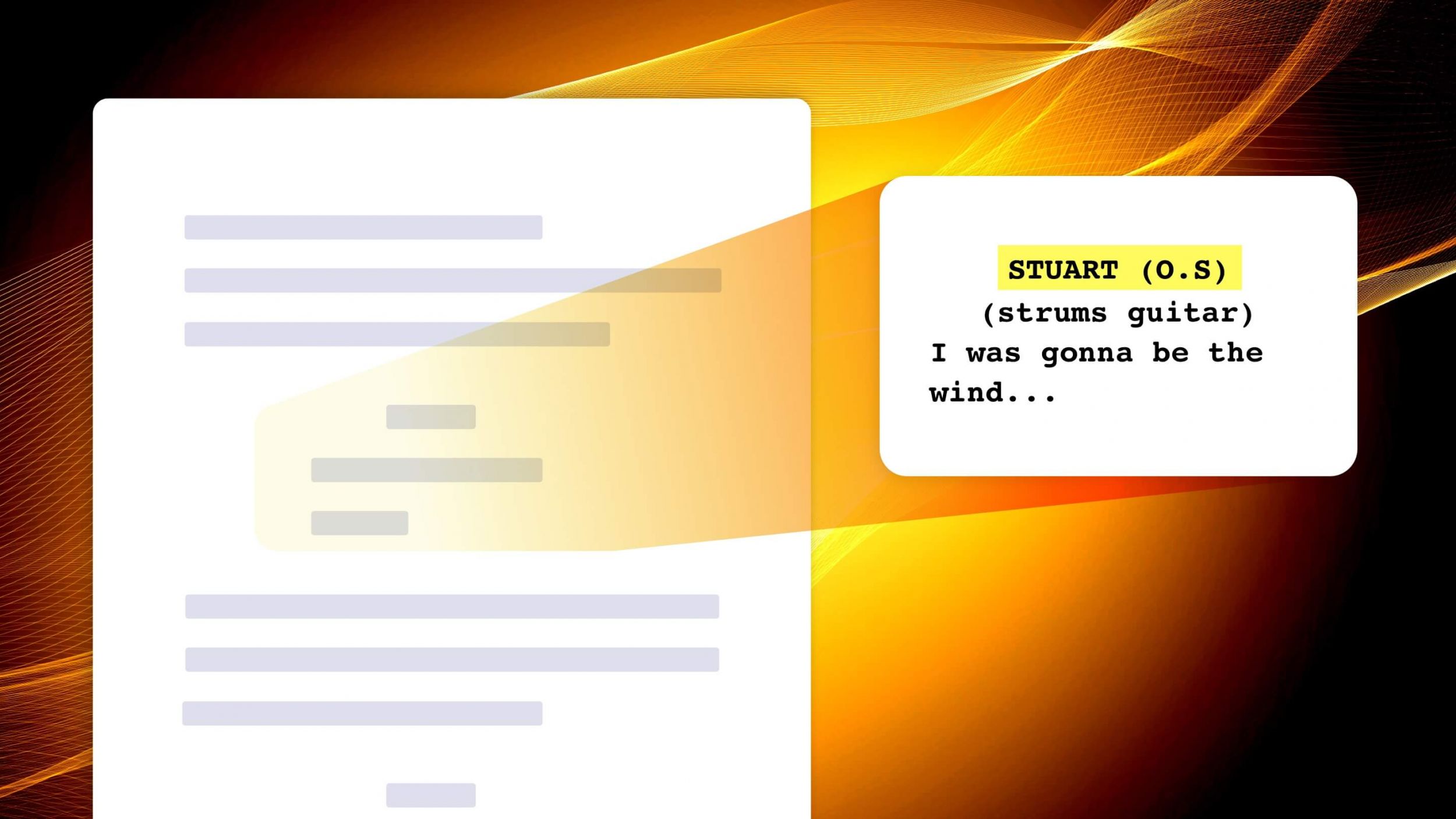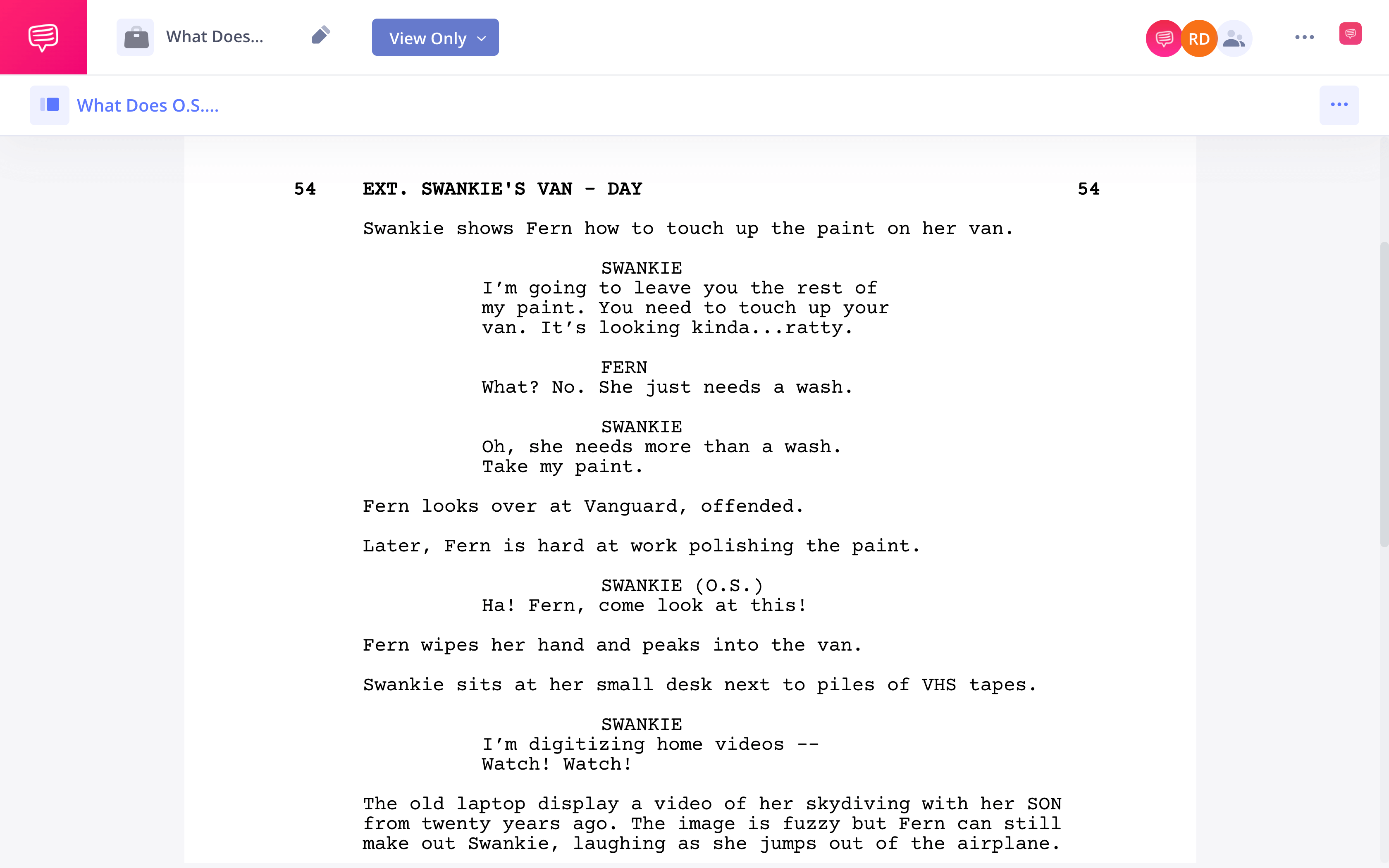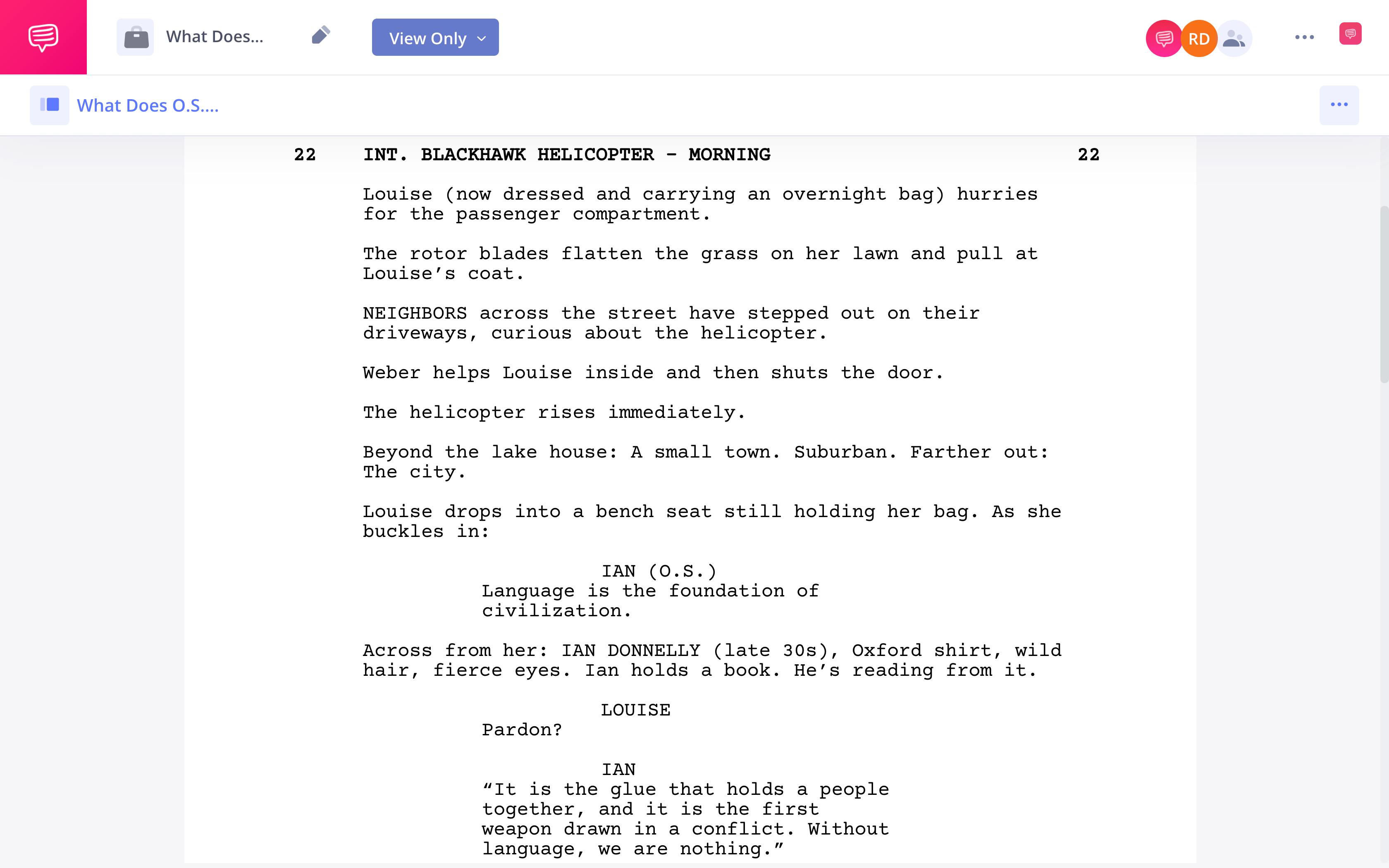In scriptwriting for film and television, some numerous terms and abbreviations guide the narrative flow. One such term is O.S. But what does it mean, and how does it influence the way a story unfolds? In this article, we’ll take a look at the applications of O.S. dialogue, its significance in storytelling, and how it is used to shape suspense, scenes, and ultimately, add to the reading experience of a scene.
Watch: Anatomy of a Screenplay Pt. 2
What Does O.S. Mean in a Script?
First, let’s define O.S. in a script
Let's begin by defining what O.S. stands for and how it functions within a script. And later we'll look at some examples and creative applications.
O.S. DEFINITION
What does O.S. mean in a script?
In screenwriting, O.S. stands for "Off Screen." This term is used to indicate that a character is speaking, but is not currently visible on the screen. It's a direction given to the actors and the film crew to help them understand the scene dynamics. For instance, if a character is in another room or behind a closed door and their voice is heard by other characters or the audience, the script would denote this with an O.S. next to the character's name when they speak.
The use of O.S. helps to create depth in a scene and can add an element of surprise or suspense, depending on the context. It's a very useful tool in a scriptwriter's toolbox for controlling the flow of information and the audience's perspective.
When to use O.S. in a screenplay:
- A character is in another room
- For "diegetic narration"
- To create suspense by not showing the speaker
O.S. Meaning Script Tips
O.S. vs V.O.
It's important to note that O.S. differs from V.O. The terms O.S. (Off Screen) and V.O. (Voice Over) are both used in scriptwriting, but they serve different purposes and should not be confused.
Here's a breakdown of the two:
O.S. (Off Screen)
As mentioned earlier, O.S. is used when a character is speaking but is not currently visible on screen. They might be in a different room or behind a closed door, but they are physically present in the scene's location.
For example:

O.S. in a Script Example
In this instance, Mike is not visible on screen, but he is physically present somewhere in the house.
V.O. (Voice Over)
V.O., on the other hand, indicates that we hear a character's voice over the action. The character might be narrating a story, reading a letter, or providing commentary. Unlike O.S., the character does not need to be physically present in the scene's location.
For example:

O.S. in a Script Example
In this case, the narrator is not physically present in the scene. The voice-over is used to provide context or commentary to the visuals.
Understanding the difference between O.S. and V.O. is crucial for scriptwriters, as it impacts how the story is told and how the audience experiences it.
Related Posts
Applications of O.S. In Script
Situations where O.S. is used in scripts
The use of O.S. (Off Screen) in scripts is quite common and can be used in a variety of situations to enhance storytelling. Let’s look at some typical scenarios where O.S. might be employed as well as some real screenplay examples that we brought into StudioBinder’s screenwriting software to analyze further.
1. To Convey Off-Screen Presence:
Most commonly, O.S. is used when a character is not physically present in the scene but is still part of the action through their voice. This can help maintain the continuity of a character's presence, even when they are not seen.
In this scene from the Nomadland script, (O.S.) dialogue is used to maintain the continuity of Swankie’s character as she moves through the scene.
Nomadland (O.S.) Example
2. To Create Suspense or Surprise:
Sometimes, a script might use O.S. to build suspense or set up a surprise. A character's voice might be heard off-screen before they appear, creating anticipation.
A great example of this is in the screenplay of Arrival. In this scene, O.S. dialogue is used to create anticipation of the introduction of one of the film’s main characters.
Arrival (O.S.) Example
3. For Practical Filming Considerations:
In some cases, O.S. is used for practical considerations during filming. It might be easier or more cost-effective to have a character speak off screen rather than setting up a new camera angle or location.
Remember, the key to using O.S. effectively is to ensure it serves the story and enhances the audience's understanding and engagement. It can help create a cinematic experience for someone reading the script, visualizing what is meant to be seen on the silver screen.
Up Next
What is Voice Over?
Now that we've explored the concept of O.S. in scriptwriting, let's move on to another important term in storytelling that we briefly mentioned: Voice Over.


